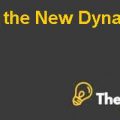Research Objective:
The objective of this research is to gain a comprehensive understanding of volatility for hedge funds.The motivation of the topic is that hedge funds have grown in importance during the 21st century but due to their complex nature, people fail to understand the volatility associated with the portfolios. Investors regularly experience unpredictable fluctuations in the performance of hedge funds, this is due to flaws in understanding volatility and the complexities that underlie its accurate determination.A better understanding of volatility in hedge funds can help them in understanding and capitalizing on the investment opportunities provided by derivatives, thereby contributing towards maximization of their profits.
Background:
Hedge funds are investment tools with the aim identical to most investments, i.e. to maximize investor returns. Hedge funds have grown in popularity since the early 2000s. A typical hedge fund includes investors who contribute the finances for investment and a fund manager who is a professional with expert understanding of the intricacies and complexities involved in hedge fund investments.
Hedge funds are usually considered more aggressive and unorthodox than mutual funds as the tactics used to achieve profits are riskier. Hedge funds regularly use tactics like investing borrowed funds on an investment that their research tells will perform well enough in the futureto provide far greater profits than initial borrowing costs, they strategically buy (long) stocks if they think that their performance will improve in the future and sell (short)stocks if they think that there will be a decline in future performance trade inderivatives. The fund managers use strategies to reduce risk but the general perception is that these strategies are risky.
Volatility for hedge funds Harvard Case Solution & Analysis
Hedge funds also regularly invest in derivatives to achieve profit maximization. Derivatives are financial securities whose values depend on an underlying asset. The value of the derivative then changes as a stock performance changes.Most commonly, the underlying assets are commodities, interest rates, currency rates, bonds and stocks. The derivatives can be standardized and traded on exchanges and they can also be traded over the counter, which are unregulated.
The original use of derivatives was to hedge foreign exchange risk exposure but now derivatives are used not only for hedging foreign rate risk but for profit maximization as well. There are now derivatives based on a wide variety of transactions and not just changes in foreign currency rates. The most common form of derivatives are the Futures Contracts which involve two parties agreeing for the sale of an asset in the future. These are generally used for hedging foreign exchange risks. Another popular type of derivative is the forwards contract which is quite similar to the futures contract but is traded only over the counter, i.e. it is not traded on exchange. Swaps are also a commonly used derivative. In swaps, two parties swap their liabilities to save costs, for instance, in interest rate swaps, one party may swap its fixed interest rate liability with another party’s variable interest rate liability. Lastly, options are also a commonly used derivative instrument, options are similar to futures contract but the only difference is that a party has the choice of exercising or not exercising the option.................
This is just a sample partical work. Please place the order on the website to get your own originally done case solution.













